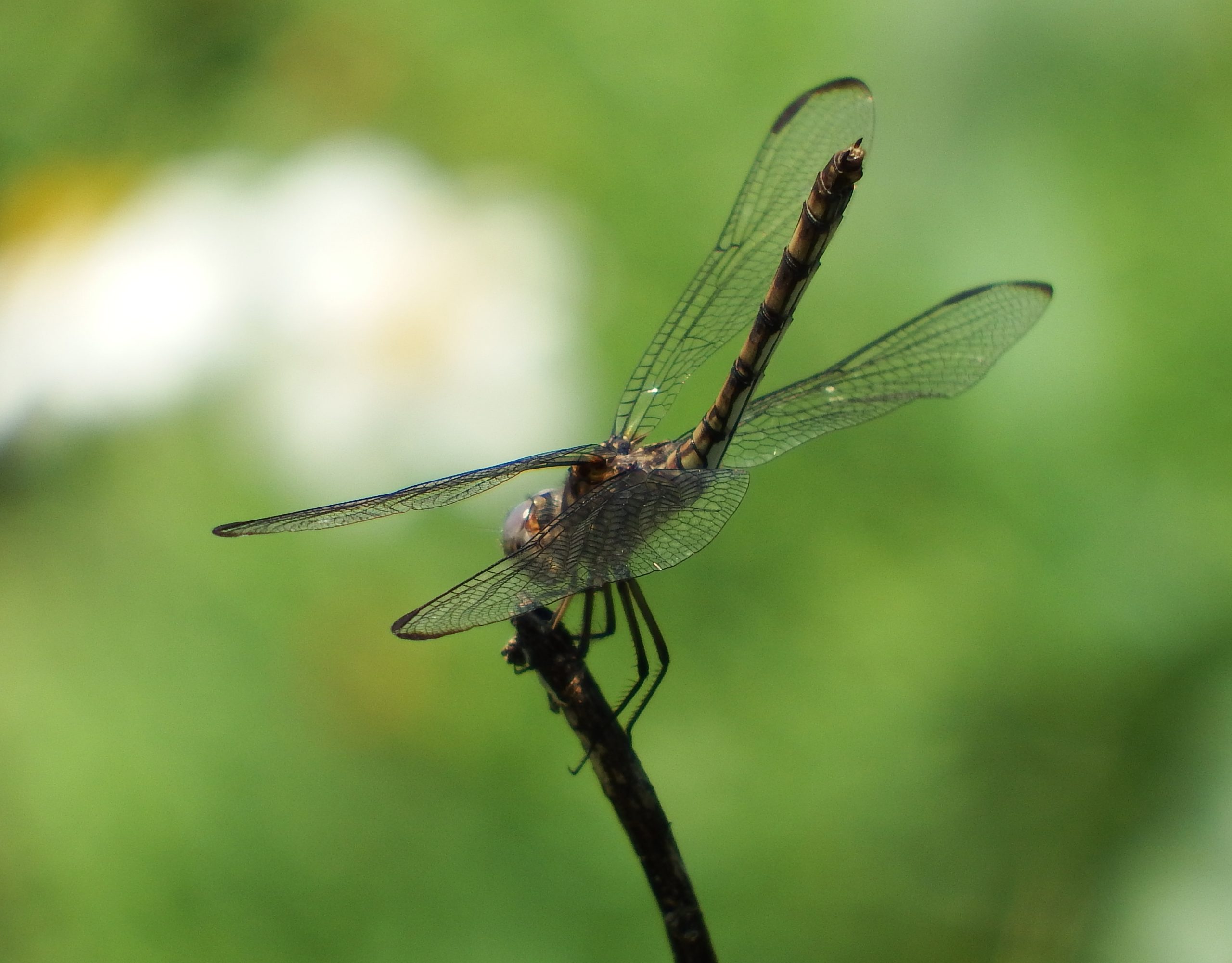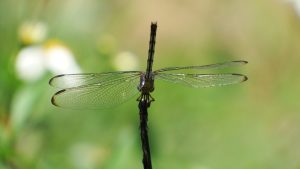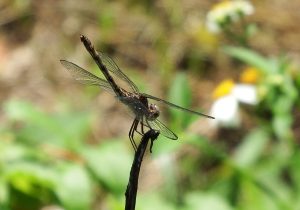What’s this dragonfly doing?
When I’m out walking on the bayou, my two most frequent thoughts are:
1) what is that? and 2) what’s that critter doing?
As to the first question, I knew this was a dragon fly because that’s easy. Although you should pause a moment when you’ve got a really slender dragonfly because it may be a damselfly – a different insect. More on the difference in another post, but the quick way of telling them apart is that a dragon fly will spread her wings when perched and a damsel fly will fold his over his back.
This particular dragon fly landed next to me and promptly stuck his butt up in the air. Since he (or she) was on a dead stick just about his body width, I thought of camouflage – you can’t see me because I now look just like this stick. It wasn’t very convincing, but maybe, it would work, so I watched for a while.
The dragonfly returned multiple times to this spot and re-assumed his awkward pose. So, what was that critter doing?
Dragonflies are among the world’s best hunters, with a success rate of 95%. If you are small and aloft and the dragonfly sees you before you see her, you are dinner. Actually, you are just one in a steady stream of dinners. Dragonflies eat continuously. The military studies them because they are the most agile fliers imaginable. Their four wings operate independently permitting quick turns and acceleration. They hunt on the wing (not while pretending to be a stick). Dragonflies close in from below and behind to scoop up prey in their six legs and then crush their victim in their teeth. They are in the order Odonta because that’s Latin for OMG this bug has teeth!!!
300 million years ago, dragonflies had three foot wingspans. And now you have another reason to be glad you live in 2018 and not 300 million years ago. But none of this told me what my dragonfly had been doing.
Turns out, butt in the air is how dragonflies stay cool. Like all insects (and amphibians and reptiles) dragonflies are coldblooded. They cannot internally regulate body temperature so they rely on a bunch of strategies to keep their muscles and organs at safe and effective operating temperatures. Putting your but into the air minimizes the amount of body surface directly exposed to the sun. The wing position is part of the strategy as well. They are cantilevered precisely to shade the insect’s thorax. There’s even a name for this dragonfly pose. It’s called the obelisk position. An obelisk is a tall pointy monument. Like the one in D.C. or the obelisk sculpture in front of Rothko Chapel.
Not all dragonflies will use this strategy to cool off. Perching species of dragonflies use the obelisk position and a number of other positional strategies to thermo-regulate, but dragonfly species that mostly stay in the air will circulate blood from deeper inside their bodies to surface areas to air cool it as they fly.
In trying to figure out what was going on with my new best friend, I found a book called Dragonflies through Binoculars. Dragonfly ID books I have found through the years assume that you plan to kill your subject and study her through a magnifying glass. If you can’t see the veins in the wings, you are out of luck. But with my new guide in hand, I imagine this is not the only time your trusty naturalist will be writing about dragonflies. Living ones. Who do cool things.




